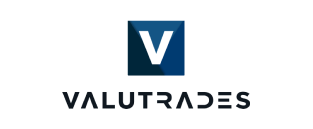In the UK, financial services firms are subject to stringent regulations governed by the Financial Conduct Authority (FCA), particularly concerning financial promotions, which refer to the marketing of financial products or services. Ensuring compliance with these regulations can be challenging. This article explores traditional manual approaches and contrasts them with modern technology-driven solutions to manage financial promotions effortlessly.
Traditional Manual Approaches: Diligence and Challenges
Traditionally, managing financial promotions has been a meticulous, labour-intensive process. Firms have relied heavily on manual oversight, involving compliance teams reviewing each piece of promotional material to ensure adherence to FCA regulations. The core aspects of this approach include:
1. Thorough Review Process: Each advertisement, brochure, online content, or any form of promotional material undergoes a detailed review. Compliance teams check for clarity, fairness, and not being misleading, ensuring that the information is presented in a way that is understandable to the average consumer.
2. Record-Keeping: Firms maintain extensive records of all promotional materials, revisions, and approval processes. This documentation is crucial for audit trails and FCA inspections.
3. Training and Awareness: Regular training sessions are conducted for marketing and sales teams to stay updated on regulatory requirements and changes.
4. Regular Audits: Manual spot-checks and audits are performed to ensure ongoing compliance.
However, these traditional methods have significant challenges. The process is time-consuming and prone to human error. As regulations evolve and the volume of digital content increases, the manual approach becomes increasingly challenging to scale and less reliable.
Technology-Enhanced Approaches: Efficiency through Innovation
With advancements in technology, many firms are now turning to software solutions to streamline the management of financial promotions. These technology-driven approaches offer several advantages:
1. Automated Compliance Checks: Modern software can automatically analyse text and imagery in promotional materials against a database of regulatory requirements. This includes checking for mandatory disclosures, risk warnings, and the use of appropriate language.
2. Workflow Automation: Technology can manage workflows, automatically routing materials for review, revisions, and approval, significantly reducing the processing time.
3. Real-Time Updates: As regulatory changes occur, software can update its compliance criteria in real-time, ensuring that all promotions are evaluated against the most current standards.
4. Data Analytics and Reporting: Advanced analytics can provide insights into compliance trends, identify common errors, and support decision-making. Automated reporting tools can generate compliance reports effortlessly.
5. Integration with Digital Platforms: Technology solutions can integrate with social media platforms, websites, and other digital marketing tools, allowing for real-time compliance checks before content goes live.
Comparative Analysis: Manual vs. Technology-Driven Approaches
Comparing the two approaches, the differences are stark in terms of efficiency, scalability, and reliability.
– Efficiency: Manual reviews are time-consuming and can delay the launch of marketing campaigns. Automated systems, on the other hand, can review content in a fraction of the time, allowing for quicker turnaround.
– Accuracy and Consistency: While manual processes depend heavily on the expertise and attentiveness of individuals, software solutions provide consistent, unbiased reviews, reducing the risk of human error.
– Scalability: As firms grow and the volume of content increases, especially across digital platforms, technology solutions can effortlessly scale to handle the increased load, a feat challenging to achieve with manual processes.
– Cost-Effectiveness: Initially, technology solutions may require a significant investment. However, in the long run, they can be more cost-effective by reducing the need for large compliance teams and minimizing the risk of regulatory fines.
– Adaptability: Regulatory environments are dynamic. Manual processes require continuous training and updates, while software solutions can adapt more quickly to regulatory changes.
Conclusion: Embracing a Technology-Driven Future
In conclusion, while traditional manual approaches to managing financial promotions have their merits, particularly in terms of human oversight and understanding, technology-driven solutions offer a more efficient, accurate, and scalable approach. As the financial services industry continues to evolve, especially in the digital realm, the integration of technology in compliance management is not just advantageous but necessary. Firms that embrace these technological solutions are better positioned to manage their financial promotions effortlessly, ensuring compliance, and focusing on growth and innovation in an increasingly competitive market.
My Compliance Centre’s Financial Promotions Module enables you to to record, review and track financial promotions in a way that is flexible and configurable with your workflow – find out more.












